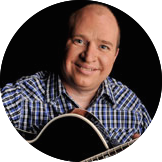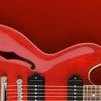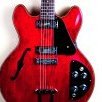
ScottH
Members-
Posts
8 -
Joined
-
Last visited
Reputation
9 NeutralRecent Profile Visitors
The recent visitors block is disabled and is not being shown to other users.
-
I've started playing standing up or on a stool with my left leg up in a classical position. I was playing in a lounge chair that I had to prop a certain way to put the fret board just right to make four fret stretches easy for three note on a string scales, jazz chords, etc. I'm just starting to play as fast and smooth as I was when sitting in the lounge chair, partly because it seems like I have to stretch more when standing or playing classical...I think I had the neck way up against my ear in the lounge chair. I notice now that I really need about 5 minutes of warm up before I can play fast and fluid, but I imagine I'm building more stretch in my fingers. This way if I want to play around a campfire I won't have to bring my lazy boy.🙂
-
AK0693 I got to the soloing lesson in GL&M and felt like my right hand technique was getting smoother but I was still stumbling with string jumping, palm muting, pull offs, etc. I bought a book that I really like that talks about fundamentals and gives lots of exercises to help with right hand technique...Amazon "The Serious Guitarist - Right Hand Picking: A Technique-Building Approach for the Dedicated Guitarist. He (Mark Burgess) speaks to economy of motion, alternate picking, string jumping, holding the pick, not supporting the hand, etc. The exercises force you to develop memory of where the strings are and the economy of motion keeps you where you need for picking specific strings...I like it, not a gimme, lots of practice to get there but I believe it has made me much faster, much more fluid, etc. A secondary benefit has been my fast strumming, with all the work on holding and using the pick, I've gained a lot more control of the pick when strumming fast, ability to keep the pick where I want it when strumming, and recognizing some of the concepts Steve gave in GL&M that I didn't get when learning strumming...like holding the pick firmly without tensing up. I've almost got Touch of Gray dialed in for the looper, and I intend to go after Mark's Left Hand technique book next.
-
Session 17 - Going Beyond the First Position
ScottH replied to NeilES335's topic in Gibson's Learn & Master Guitar
First off, great course I’m really starting to see some skills develop. Along those lines, with the work on scales, spelling chords, and learning the notes on the fretboard, I’ve come to realize that only the open suspended chords given in lesson 6 (Asus, Dsus, and Esus) are suspended 4 chords where as the suspended bar chords are suspended 4 chords with a flatted seventh (*7sus4 or *7sus or *sus7) I don’t know if this matters or not but when I’m playing along with some of the tracks and the song asks for a Fsus or a Gsus All I know how to play is the bar suspended bar chord which is a seven chord, which is what I do. Should I figure out how to finger the suspended chord without the 7th? And...has anyone else been confused with this? Is a suspended 7 chord considered the same (or equivalent) to a suspended chord (1,4,5) even with the flatted seventh? -
Session 14 - Giving Your Playing Some Style
ScottH replied to NeilES335's topic in Gibson's Learn & Master Guitar
An interesting crossroads! I’m spending quite a bit of time practicing the shuffles outlined in earlier lessons and working the hammer ons, offs, and slides to get better timing, accuracy and a more relaxed feel/sound. Massaging my swung eighths, accentuating notes, pick control, stretch fretting, optimizing finger position, and string skipping. Seems to make my sound more fluid and my song learning more efficient. Also learning a couple of simple finger style songs...which really drive solid chord changes. A very clever, well thought out course that builds skills in a subtle but strategic way. -
Nice! I happen to be working on the fingerstyle session in the Learn and Master series, and love this hymm...one of the greatest worship songs ever written. My fingerstyle guitar is in its infancy, but I love the sound and recognize how valuable practicing fingerstyle is to technical development; chords must change very accurately, all strings must ring clearly, attack of each note needs to be precise, and you have to rub your belly while patting your head at the same time. Working on fingerstyle definitely improves skills. Thank you Steve. Do you have a book or compilation of other worship song sheet music/tab for sale? Thanks, Scott
-
Session 7 - Barre Chords on the 6th String
ScottH replied to NeilES335's topic in Gibson's Learn & Master Guitar
Thanks Neil! Makes sense, I had no idea about pulling the guitar toward me, nice. For the chords, I’ll work the keys like you said, Which will help my scale memorization at the same time, thanks. -
Session 7 - Barre Chords on the 6th String
ScottH replied to NeilES335's topic in Gibson's Learn & Master Guitar
Lesson 7 has been an eye opener for me. When I started this course I had been using some of the basic barre chords on both the 5th and 6th strings, but apparently not for long enough sessions to see that I had finger strength issues. I find that now, after a week (and a sore wrist) I'm more accurate and smooth with my 6th string barre chords (with the exception of the 6 string C's and D's when I start getting tired)...still working on the hand strength issue. Another thing I found is that although I've gotten pretty smooth on the 6th string barre chord changes, on the last page of exercises in the resource book, where you combine open chords and barre chords, I find that my open chord changes are pretty rusty now, after getting to a point where they were pretty smooth at the end of session 6. I'm now thinking that maybe I need to add to my practice warm up chord changes for every chord I know, along with my pentatonic scales, etc. Is this typical, that you need to keep practicing chord changes for all the chords you know as you move forward in learning guitar? I'm thinking of starting at A and changing from A to Am, A to A7...through all of the chords, open and barre, then doing the same pivoting from Am, and so on as an exercise, probably one pivot chord per day...60 chord changes (probably one bar per chord) once I include the 5th string barre chords each day. Does anyone have any insight into whether this makes sense or has another way to keep improving my chord changes? I "played the guitar" many years ago but only learned a few open chords and some barre chords, I'm realizing now how much practice is required to really play chords well, and how technical chords are in relation to other guitar skills. It seems to me that if you can master chords, the other stuff will come much easier. -
New to thread posting and this site, my apologies if I'm posting this in the wrong place... First off, I'd just like to say that I'm very impressed with the Learn and Master Guitar Course. I moved through a few of the sessions pretty fast as I took some lessons several years ago and played instruments in school. I'm now a week into Session 6 and recognize that I never "owned" strumming or chord changes, hoping to tie that one off in a week or so! I think the course is laid out perfectly for my style of learning (I'm in my late 50s), and gives me all the tools to really develop my guitar playing abilities. I never really practiced the instruments I played in school, or for that matter the guitar when I took lessons. I recognize through the lesson plan in the course how important consistent practice is, how important it is to know what to practice, and how important it is to understand the theory and musicality of the instrument to play it well. Steve and the Team that set this course up have a real gift for recognizing the needs of developing musicians as well as developing a working program that meets those needs. Thanks for putting this course together and making it available.






